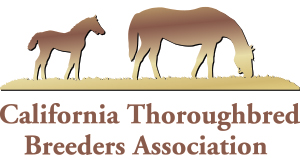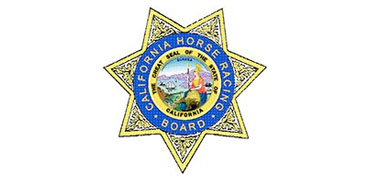From CHRB
SACRAMENTO, Calif. (Aug. 2, 2021) – California horse racing experienced a 50-percent decline in equine fatalities over the last two fiscal years, largely due to steps taken by the California Horse Racing Board and a team effort with the entire California horse racing industry. After 144 horses died in FY 2018-19 from racing or training injuries or other causes while stabled at facilities under the CHRB’s jurisdiction, the number dropped to 72 in FY 2020-21, down by half.
This progress did not come about suddenly. The list of safety initiatives on the CHRB website dates back decades. Previous racing commissioners demonstrated a strong commitment to racing safety. Racetrack owners and management have provided leadership and resources. Horsemen’s groups have provided encouragement and support with the cooperation of owners, trainers, jockeys, veterinarians, and other stakeholders in the industry.
While the numbers of equine fatalities have been trending downward since 2005, the last fiscal year marked the most significant improvement in a single year with a 40-percent decline. Continuing the actions of previous Boards, which included establishing an entry review panel for Santa Anita at the direction of Governor Gavin Newsom, the current commissioners expanded the review panel program to all tracks to make certain that entered horses are fit to compete.
Dr. Greg Ferraro, chairman, recalls setting the course for the Board at the first meeting he chaired on November 22, 2019: “I stated that our primary focus would be the health and safety of horses and riders. We’ve come a long way in fulfilling that promise, and I assure everyone that we will remain committed to that effort with new policies and regulations.”
Over the last 19 months, Chairman Ferraro, Vice Chairman Oscar Gonzales, and Commissioners Dennis Alfieri, Wendy Mitchell, and Alex Solis, later joined by Commissioners Damascus Castellanos and Brenda Davis, have taken more than 40 regulatory actions intended to either directly or indirectly protect horses, thereby reducing fatalities and protecting riders. Among the more significant actions, the commissioners:
· Adopted rules limiting the use of the riding crop, which at the time were the strictest rules in the nation, while enhancing penalties for violation of those rules.
· Required trainers to participate in a full postmortem examination review to make them aware of the nature of the injuries and to discuss ways to prevent such injuries in the future. This has helped lead to a culture change in the California horse racing industry whereby participants are placing a higher priority on the protection of horses.
· Allowed Official Veterinarians to require diagnostic imaging prior to removing horses from the restrictive Veterinarian’s List and permitting them to train or compete.
· Prohibited or severely restricted the use of bisphosphonates, thyroxine, extracorporeal shockwave therapy, and intra-articular injections prior to workouts and racing.
· Took significant steps to make veterinary treatments transparent to authorities and in certain cases new owners.
Furthermore, the CHRB recently created the new position of Chief Official Veterinarian and named Dr. Timothy Grande, longtime Official Veterinarian on the Southern California thoroughbred circuit, to meet the broad responsibilities of overseeing veterinarians, veterinary procedures, and practices throughout the state. The CHRB also appointed Dr. Jeff Blea to the role of Equine Medical Director, who will bring new ideas, perspective, and energy to this important position.
Executive Director Scott Chaney is excited with the direction the CHRB has charted: “I took this job a year-and-a-half ago because I recognized this Board’s and the Administration’s commitment to real, significant, long-term reform in the arena of animal welfare. It has been gratifying to be a part of this sea change in racing, and the results are undeniable. We clearly have more work to do, but with this reform-minded Board, dedicated staff, and committed stakeholders, the future is bright.”
Reform efforts continue in all areas of animal welfare with specific emphasis on standardizing and utilizing algorithms to identify high risk horses, completing race-day medication prohibition, applying a science-based approach to making track surfaces safer, and exploring other ways to reduce and eliminate human and equine injuries.
Details on all Board actions are available in press releases on the CHRB website.


